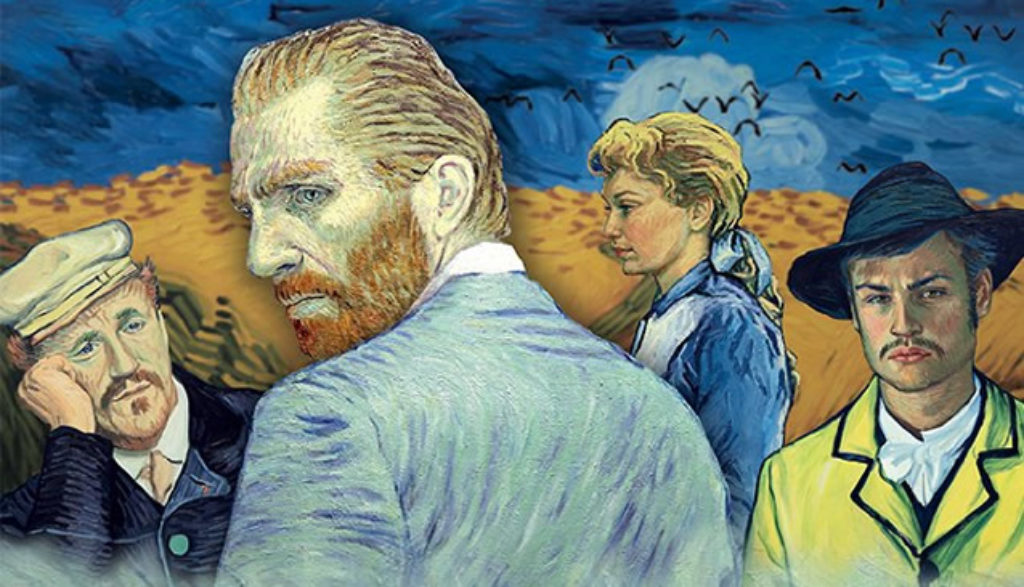
“I want to touch people with my art. I want them to say: He feels deeply, he feels tenderly.” So said Dutch Post-Impressionist Vincent van Gogh, a master painter whose death remains shrouded in mystery.
Van Gogh began painting in his late 20s. And in just eight years, he completed more than 800 works—his iconic painting “Starry Night” chief among them.
Van Gogh has long been a poster child of sorts for the cliché of the “tortured artist.” He struggled with bouts of deep mental illness—often characterized as insanity—so driven was he to share with others what he saw in nature and in life. And his death, allegedly a suicide, at the age of 37 has been a controversial subject among historians.
But did Vincent van Gogh actually take his own life with a gun, shooting himself in the midsection? Or was he shot by someone else? Vincent, who lives 30 hours after that infamous event, says he alone was responsible. But is he covering for someone? Thus begins a whodunit film looking for answers in this 100-plus-year-old mystery, one that commences in the streets of Arles, France, in 1891.
Vincent van Gogh has died an untimely and mysterious death. Armand Roulin has been tasked (by his father, Joseph Roulin, the Postmaster) with delivering a letter written by the deceased painter to the man’s brother, Theo.
Little does he know the mystery he’s about to step into.
Armand has barely begun his journey when he learns that Theo has also killed himself shortly after his brother’s death. Now Armand must seek out someone else to help him locate a family member with whom to leave the letter.
Travelling to Auvers, France, Armand soon meets a cast of characters who each relate different details and theories regarding Vincent’s death:
Dr. Gachet, Vincent’s doctor and therapist, tells Armand that he and Vincent were very close. Vincent confided some of his deepest fears and feelings in the man, he says. And Dr. Gachet believes that in his tormented, melancholic state, van Gogh was capable of anything.
Marguerite Gachet, daughter of Dr. Gachet, was reportedly close to Vincent, always bringing flowers to his grave. When Armand inquiries about the nature of their relationship, she lies to him at first, saying she only admired him as an artist. She later tells him that her father instructed her to keep her distance from Vincent. She does not know the cause of his death, caring more about the legacy of his life.
Louise Chevalier, a devout housemaid of Dr. Gachet, believes Vincent was “evil” and a “nutcase.” She is glad about his death and viewed the artist as irreverent.
Adeline Ravoux, the local innkeeper’s daughter, meets Armand when he comes to her inn for lodging. She tells Armand how good a man she thinks Vincent was. Adeline says he was gentle and kind, painting from morning until night. She believes someone else had to have been responsible for Vincent’s death, not believing him capable of suicide. She also warns Armand not to trust the Gachets’ stories.
Armand meets others, too, such as the Boatman, Officer Rigaumon, Dr. Mazery. Each person has his own version of Vincent’s death and motives behind the tragedy, making this feel a bit like an Agatha Christie novel.
Finding no conclusive evidence, Armand must ask himself some tough questions. Who does he believe? What does he believe? And why is he now so invested in uncovering the fate of a man he hardly knew?
Vincent van Gogh is characterized in many ways in the film. And one frequent depiction is as a man of passion and attentiveness.
Adeline believed Vincent to be an odd-but- kind artist, always immersing himself in the details around him, saying that “no detail of life was too small or to humble for him.” And while some took his seemingly obsessive interest in seemingly small things as evidence of his insanity, others viewed him as someone who sought to see life with great clarity.
In the film’s final scene, Armand sits with his father and describes his many encounters. He is spurred on by Vincent’s passionate life to pursue his own unique journey, and a renewed sense of purpose is present in Armand’s own life.
Louise Chevalier is devoutly religious and makes it known in every interaction she has with Armand. She’s critical, for instance, of Vincent’s willingness to drink on “the Lord’s Day.” Elsewhere, we hear the phrase, “heaven forbid.” Vincent says something to the effect of, “Maybe we can take death to go to a star.”
Women wear tight, cleavage-baring corsets. We also hear that someone was in “the tertiary stages of syphilis.”
Vincent is shown with an exposed and bleeding gun wound in his torso. Someone says that Vincent also “cut off his d—k as well as his ear.” Children throw rocks at Vincent as he paints. He’s said to be suicidal and admits, “I tried to kill myself.” He also gives a woman a piece of his ear in a napkin, which he himself has cut off. Armand, for his part, gets involved in a couple of fistfights.
We hear “d–n” and “whore.”
Numerous scenes picture men and women drinking wine, beer, whisky and other liquor. Armand gets drunk several times. Men and women smoke cigarettes and pipes.
Vincent is often depicted as a hopeless, lonely soul who struggles to fulfill some purpose he can’t fully grasp.
More than a hundred artists collaborated on the creation of Loving Vincent. Accordingly, each of the captivating film’s 65,000 frames is hand painted, a collective labor of love that serves as a visual homage to the man whose mysterious, dramatic, tragic end this film explores.
It’s the story of a brilliant artist who was clearly deeply troubled. History says as much. But history has also failed to definitively answer some big questions about his death. Why did Vincent van Gogh die? Who was responsible? How much should be blamed on his oft-mentioned mental illness? Or did that malady play a smaller role than we’re sometimes led to believe?
This story artfully investigates different perspectives on the questions that swirl around Vincent van Gogh’s death. It paints a portrait (literally) of a gifted, frail, flawed man. (As does the slightly newer film about van Gogh’s life, At Eternity’s Gate.) Some scenes inspire viewers to passionately pursue a purpose larger than ourselves. Other times, the film offers a stark, somber reminder that even the most talented, visionary and passionate among us may still succumb to overwhelming issues of the soul.


Kristin Smith joined the Plugged In team in 2017. Formerly a Spanish and English teacher, Kristin loves reading literature and eating authentic Mexican tacos. She and her husband, Eddy, love raising their children Judah and Selah. Kristin also has a deep affection for coffee, music, her dog (Cali) and cat (Aslan).